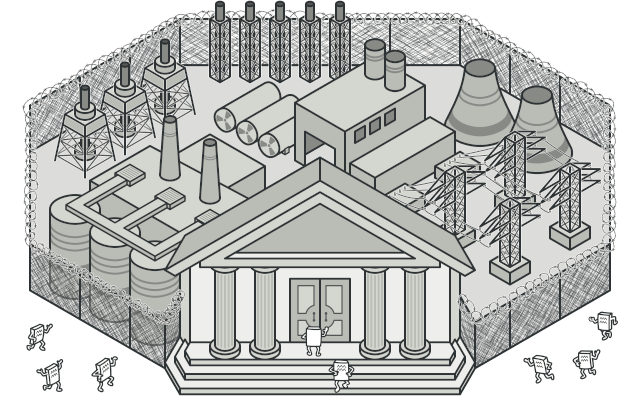Table Of Content

A Facade shields the user from the complex details of the system and provides them with a simplified view of it which is easy to use. It also decouples the code that uses the system from the details of the subsystems, making it easier to modify the system later. The Facade design pattern simplifies the interface to a complex system; because it is usually composed of all the classes which make up the subsystems of the complex system.
Software Design Pattern in Different Programming Languages
Clients need to interact with multiple services implemented by subsystem classes. Due to their multiple interactions, there can be a lack of encapsulation of the internal structure of the subsystems. The Facade pattern, when implemented correctly, has the power to simplify complex systems and improve code readability and maintainability. As we’ve seen in this article, it can be adapted to different systems — from monolithic architectures to microservices, from legacy systems to modern concurrent and distributed systems. With its inherent flexibility and the power of Java, the Facade pattern stands as a formidable tool in a developer’s toolkit. In this example, a universally applicable interface “Shape” is to be defined for objects that represent a geometric form.
What’s the difference between Abstract Factory and Facade patterns?
Once the Payment is Successful, we need to send the Payment Invoice to the customer, and for this, we will use the Invoice System. So, create a class file named Invoice.cs and copy and paste the following code. This class has a method called Sendinvoice to send the invoice. Sometimes, we are also sending the Payment Failed Invoice to the client. The following Invoice class can accept the request from the Facade class or the client directly.
Design Patterns — A quick guide to Facade pattern.
The subsystem Code works as an functionality any class, from the above example we will make the AudioPlayer, VideoPlayer , and ImageLoader as an class. But the user is not able to see what is happening behind the User Interface. For instance, an eCommerce platform might have separate microservices for user management, product management, and order management. A ECommerceFacade can simplify the interaction between these microservices.
Best Practice: Keep Facades Lightweight
klein dytham architecture clads osaka's cartier store façade in luminous protruding diamonds - Designboom
klein dytham architecture clads osaka's cartier store façade in luminous protruding diamonds.
Posted: Fri, 04 Feb 2022 08:00:00 GMT [source]
It involves creating a facade class that represents a higher-level, unified interface to a set of interfaces in a subsystem. This pattern hides the complexities of the subsystem and provides a simpler interface for the client code. This pattern hides the complexities of the larger system and provides a simpler interface to the client. It typically involves a single wrapper class that contains a set of members required by the client. These members access the system on behalf of the facade client and hide the implementation details. Facade pattern is one of structural design pattern among other Gang of Four design patterns.
This pattern involves a single class which provides simplified methods required by client and delegates calls to methods of existing system classes. Facade Method Design Pattern provides a unified interface to a set of interfaces in a subsystem. Facade defines a high-level interface that makes the subsystem easier to use.
The Nitty-Gritty of Facade Pattern
Facade defines a higher-level interface that makes the subsystem easier to use. Overusing facades can lead to a tangled mess of facade classes that obfuscate the system’s structure rather than simplifying it. Facades should only be used to simplify complex systems or provide a specific, simplified view of a subsystem. The properties of the facade design make it an interesting pattern for several application scenarios. Above all, there is the desire for a uniform interface to access complex sub-systems or any number of objects. That’s why the use of the facade pattern strategy should play a major role when planning a project.

J2EE Patterns
Here, in this article, I try to explain the Facade Design Pattern in C# with Examples. I hope you understand the need and use of Facade Design Patterns in C# with Examples. So you're working on a new software project and about to reach the testing phase.That's great news! But have you considered the different testing types you need to perform?
So, here, the extra class Order is nothing but the Facade class, which will be responsible for placing the order. This class internally creates the instance of the respective classes and calls the methods in a particular order. Now, the Client will not call the respective classes and their methods to place the order; instead, the Client will call the Order Class, PlaceOrder to method to place an order. The PlaceOrder method will internally use the Product, Payment, and Invoice classes to place the order. In this article, you will learn about the Facade pattern and see how you can apply it in real-world scenarios.
The facade pattern is appropriate when we have a complex system that we want to expose to clients in a simplified way. Its purpose is to hide internal complexity behind a single interface that appears simple from the outside. Facade Method Design Pattern is a part of the Gang of Four design patterns and it is categorized under Structural design patterns. It hides the complexity of the underlying system and provides a simple interface that clients can use to interact with the system. The facade class is a "wrapper" that contains a set of members that are easily understood and simple to use.
There is a very good real-life example of the pattern - The car starter engine. The Facade pattern is widely used in many modern Java frameworks. The Facade pattern is also useful in a microservices architecture.

No comments:
Post a Comment